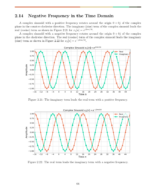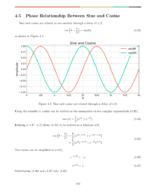Table of Contents
Introduction
The movie Apollo 13 is a great example (albeit highly dramatized) of what it is like to be an engineer in real life. I’ll describe practical lessons from the movie and describe important takeaways that are relevant to your day to day life as an engineer.
More blogs!
Engineering Operations
What is it like to be an engineer in the real world?
The movie Apollo 13 is a great description of what it is like to be an engineer. Keep in mind that the movie is dramatized and carries high stakes with the lives of three men, but the overall concepts and what engineers face in the movie are realistic and practical and likely to be encountered in your engineering lab.
Engineering is a discipline, meaning it has tools, techniques and processes that can be learned and perfected over time. Engineering is a type of skill and a way of thinking about the world and problem solving. For as logical and straightforward engineering is, the real life implementation of engineering is chaotic, emotional and at times really exciting. I am using the term engineering operations refer to the day to day life of an engineer. Engineering operations includes the day to day grind of overcoming a problem, solving it, and moving onto the next one.
The First Problem Occurs
Early into the flight of Apollo 13 an electrical short causes an explosion of some liquid oxygen tanks. The flight director, Gene Kranz played by Ed Harris, shapes the problem: they have to get their three men back alive, and they have to change course. How do they do it? This is when the brainstorming occurs. It is the job of the leader to define the problem and it is the job of the engineer to solve it. It’s not the flight director’s responsibility to come up with technical solutions.
In this case, the team has to determine how to fly the spacecraft in an unintended way using the lunar module.
The Real Problem
Who’s looking out for the unknown? Sometimes the team may be blind to a problem which could quickly turn into a critical failure. You may not be tasked with it explicitly, but it’s the job of the engineer to be looking ahead and around corners to see upcoming problems. What are the problems that no one else is considering? Bring them to the leader and let the leader consider the ideas and their importance. The leader can then raise or lower the priority of a problem and shape the current course of action. In this case, one engineer identifies the problem that they will run out of power soon if they do not turn off everything but their critical systems.
It is not the leader’s job to devise a solution! It is the leaders job to view all angles of the problem and weigh aspects of everyone and everything under their command. They cannot and should not be doing detailed design work. Instead, they present the problem, solicit feedback on ideas from their engineers and then select a solution by weighing probabilities, risk, outcomes and past experience. The engineers are the ones to design and implement the system.
The Air Filter
Engineering operations means solving problem after problem until the job is done.
They soon realize the air filters in the lunar module are not designed to support three people and the carbon dioxide is approaching deadly levels. What do you do now?
Building an air filter out of left over parts and then having to document it and communicate it to someone else is an example (although probably more high pressure than you will encounter) of real-world engineering.
Be prepared to create a solution with what you have around the lab on a short time frame. Do not expect to be given large amounts of time or large budgets. Maybe you have a customer coming by the lab unexpectedly and you need to produce a demonstration, or their schedule changed and you need to finish the system earlier than expected. Whatever the case is, expect to be constrained in both time and budget and given minimal warning.
Brief Your Customer
A solution has been created on the fly using sub-optimal parts and constructed in ways in which was not originally designed. Welcome to engineering! Now you have to teach your customer how to use it:
The solution is only good as to degree to which your customer can operate it. Making something that is easy to use is ideal, and if that’s not possible it needs to be documented clearly.
Working Together
An important part of the Apollo 13 success story is that everyone worked together for a common goal. The flight director and the engineers are on the same team. The NASA staff and the contractors are on the same team. The astronauts in space and the ground crew are on the same team. Everyone’s in alignment and working together towards a common goal. Team cohesion, across companies and organizations, is an important piece of success when performing a mission.
Conclusion
Apollo 13 is a great example of engineering operations: the day to day of working as an engineer. It’s important for leaders to understand the types of problems the team is facing and setting the appropriate priorities. The engineers brainstorm and devise solutions to the problems the leader identifies. The engineers create solutions quickly, without warning and sometimes have to use things in ways which they were not designed for. And all of it is done under the umbrella of teamwork for a common goal.
More blogs!








